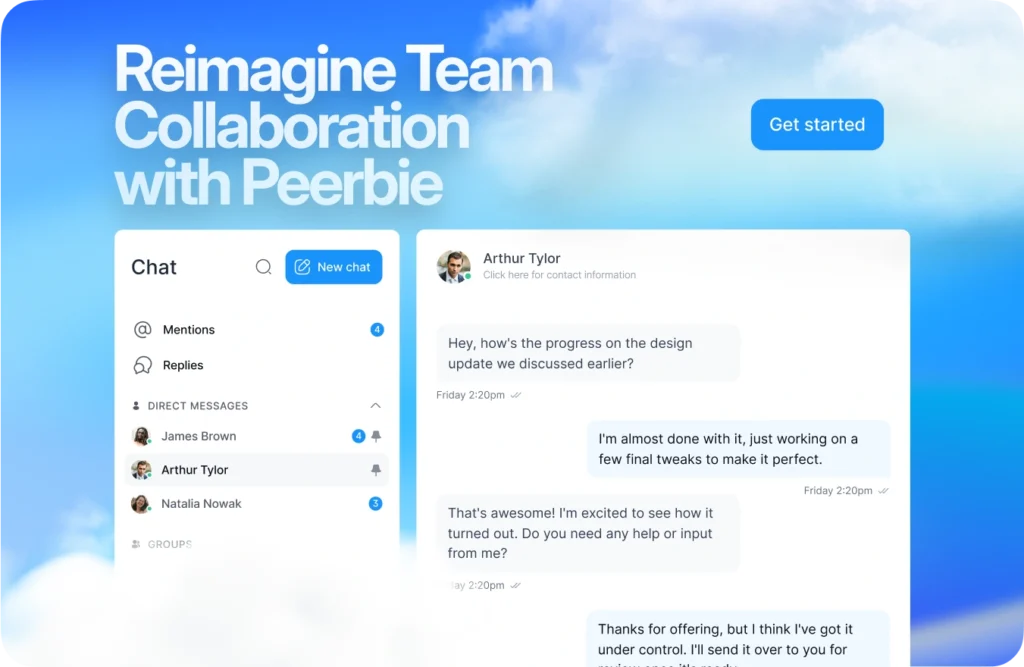10 Tips to Manage Stress in the Workplace

Workplace stress is a pervasive issue that impacts both employees and employers. When employees are stressed due to job-related pressures, their personal lives and health are adversely affected. It is important to be able to manage stress. This stress can escalate to critical levels, leading to significant performance declines and increased health risks. For employers, this translates to decreased productivity and potential financial losses. Addressing the factors causing work-related stress and implementing effective strategies to mitigate it is crucial for a healthy and productive work environment.
Factors Causing Work-Related Stress
Work-related stress can arise from several sources, including:
- Poor Work Management: Ineffective leadership and unclear job roles can lead to confusion and increased stress levels.
- Excessive Workload: Long hours and high-pressure tasks contribute significantly to stress.
- Lack of Communication: Inadequate communication between employees and management can create misunderstandings and tension.
- Work Relationships: Conflicts and poor relationships with colleagues can be major stressors.
Identifying these factors and taking proactive steps to address them can significantly reduce workplace stress.

Benefits of Reducing Stress at Work
Reducing workplace stress has numerous benefits for both employees and organizations:
Improved Health and Well-being: Lower stress levels contribute to better physical and mental health, reducing absenteeism and healthcare costs.
Increased Productivity: Employees who experience less stress are more focused, efficient, and productive.
Enhanced Employee Retention: Reducing stress can lower turnover rates, saving costs associated with recruiting and training new staff.
Positive Work Environment: A stress-free workplace fosters a positive culture and enhances overall job satisfaction.

Ways to Reduce Stress in The Workplace
Addressing work-related stress requires a combination of individual and organizational strategies. Here are some detailed approaches:
- Promote Sleep and Healthy Eating
Encouraging employees to maintain a healthy lifestyle is fundamental in combating manage stress. Adequate sleep and balanced nutrition play crucial roles in enhancing cognitive functions and energy levels, which are essential for managing stress.
Sleep: Adequate sleep is vital for maintaining cognitive functions and overall health. According to the National Sleep Foundation, most adults need between seven and nine hours of sleep each night. Sleep helps in the repair and rejuvenation of the body, including stress relief.
Nutrition: A balanced diet supports a healthy immune system and provides the necessary energy to handle stressful situations. Organizations can promote wellness programs that provide information on healthy eating and stress management.
Exercise: Physical activities such as running, walking, and yoga can significantly reduce stress levels by increasing oxygen flow to the cells and reducing muscle tension. Encouraging regular physical activity as part of a wellness program can help employees manage stress more effectively.

- Enhance Communication
Creating an environment where employees feel comfortable communicating openly with their managers and colleagues is critical in helping them manage stress and preventing it from escalating.
Open Dialogue: Encourage open communication channels where employees can discuss their job-related challenges without fear of judgment or repercussion. This openness helps in addressing issues before they become significant stressors.
Digital Communication Tools: Utilizing business management software like Peerbie can facilitate seamless communication and collaboration among team members. Such tools ensure that everyone stays connected, even in remote work settings, reducing the stress that comes from feeling isolated or misunderstood.
Regular Check-ins: Managers should schedule regular check-ins with their teams to provide a platform for discussing workload, challenges, and feedback. This practice helps in building trust and ensures that any potential stressors are addressed promptly.
- Encourage Breaks
Taking regular breaks is essential for maintaining focus and productivity. Without breaks, employees can struggle to manage stress, become overwhelmed, and face an increased risk of burnout.
Scheduled Breaks: Encourage employees to take short, regular breaks throughout the day. This helps in recharging their mental and physical energy, making them more productive upon return to work.
Mindfulness Activities: Incorporate mindfulness activities such as meditation or deep-breathing exercises into the workday. These activities can be particularly effective in reducing stress and improving focus.
Flexible Break Policies: Implement flexible break policies that allow employees to step away from their work as needed. This flexibility can significantly reduce stress, especially during high-pressure periods.
- Prioritize Tasks
Helping employees prioritize their tasks can prevent them from feeling overwhelmed by their workload. Effective prioritization ensures that critical tasks are completed on time and helps employees manage stress, reducing the pressure of last-minute demands.
Task Management Tools: Use tools like Kanban boards and task management software to help employees organize and prioritize their tasks. These tools provide a visual representation of the workload, making it easier to manage and prioritize effectively.
Set Realistic Goals: Encourage employees to set realistic goals and deadlines for their tasks. Unrealistic expectations can lead to stress and decreased productivity.
Delegation: Teach employees how to delegate tasks when necessary. Effective delegation helps in managing workload and prevents

- Get Organized
Effective workload management is essential for helping employees manage stress. A well-organized work environment and clear task management not only reduce stress but also prevent confusion and ensure smooth operations.
Task Lists and Planners: Encourage employees to use to-do lists and planners to keep track of their tasks and deadlines. These tools help in maintaining organization and reducing the stress associated with missed deadlines.
Business Management Software: Utilize software like Peerbie to streamline task management and workflow. These tools provide a centralized platform for assigning tasks, setting priorities, and tracking progress, making it easier to manage workloads effectively.
Declutter: Promote a clutter-free work environment. A tidy workspace can significantly reduce stress and improve focus and productivity.
- Use Time Efficiently
Effective time management is crucial in helping employees manage stress. Poor time management can lead to rushed work and missed deadlines, further increasing stress levels and impacting overall productivity.
Time Tracking: Encourage employees to track how they spend their time on various tasks. This practice helps in identifying inefficiencies and areas for improvement.
Digital Calendars: Utilize digital calendars and scheduling tools to allocate time for tasks and ensure deadlines are met. These tools help in planning and managing time more effectively.
Set Priorities: Teach employees to prioritize their tasks based on urgency and importance. Focusing on high-priority tasks first helps in managing time more effectively and reducing stress.
- Be Open to Criticism
Constructive criticism is a valuable tool for personal and professional growth. Encouraging employees to be open to feedback helps them improve their performance, manage stress more effectively, and reduces the anxiety associated with making repeated mistakes.
Feedback Culture: Foster a culture where feedback is viewed as a positive tool for improvement rather than criticism. Encourage employees to seek feedback regularly and use it to enhance their skills and performance.
Peer Reviews: Implement peer review processes where employees can provide and receive feedback from their colleagues. This practice promotes a collaborative and supportive work environment.
Continuous Learning: Encourage continuous learning and development. Providing opportunities for training and development helps employees stay updated with the latest skills and reduces the stress associated with feeling inadequate or unprepared.
- Focus on Solutions
A positive mindset is crucial in helping employees manage stress. By focusing on finding solutions rather than dwelling on problems, they can stay proactive, build resilience, and significantly reduce stress levels in the workplace.
Solution-Oriented Thinking: Encourage employees to adopt a solution-oriented mindset. When faced with challenges, focusing on finding solutions rather than getting stuck on the problem helps in managing stress more effectively.
Team Collaboration: Promote collaboration among team members to find solutions to problems. Encouraging team discussions and brainstorming sessions helps in generating creative solutions and reduces the burden on individuals.
Supportive Leadership: Ensure that leaders are supportive and available to help employees with problem-solving. Providing guidance and support during challenging times helps in reducing stress and maintaining productivity.
- Offer Flexibility
Providing flexibility in the workplace is essential for reducing stress. Flexibility allows employees to manage stress and their work-life balance more effectively, which can lead to increased job satisfaction and lower stress levels.
Flexible Work Hours: Implement flexible work hours that allow employees to adjust their schedules to better fit their personal lives. This flexibility helps in reducing the stress that comes from trying to balance work and personal responsibilities.
Remote Work Options: Offer remote work options to give employees the flexibility to work from a location that suits them best. Remote work can significantly reduce stress by eliminating the need for long commutes and allowing for a more comfortable work environment.
Customizable Work Arrangements: Provide employees with the option to customize their work arrangements, such as part-time work, job sharing, or compressed workweeks. These options can help employees manage stress and their time more effectively and reduce stress related to rigid work schedules.
- Provide Social Support
Creating a supportive social environment in the workplace is crucial for reducing stress. Social support can help employees cope with challenges and feel valued, which contributes to a more positive work environment.
Peer Support Networks: Establish peer support networks where employees can share experiences and provide emotional support to one another. These networks foster a sense of community and reduce feelings of isolation.
Mentorship Programs: Implement mentorship programs that pair less experienced employees with more seasoned colleagues. Mentors can provide guidance, advice, and emotional support, helping to alleviate stress related to job challenges.
Team-Building Activities: Organize team-building activities to strengthen relationships among team members. Stronger relationships lead to better collaboration and reduce stress by creating a more cohesive work environment.
Peerbie: Your Solution for Stress-Free Work Management
Peerbie offers an all-in-one work management tool designed to integrate a variety of essential functions that not only enhance productivity but also help you manage stress effectively in the workplace. By streamlining processes such as task management, team communication, project tracking, and feedback sharing,
Peerbie simplifies the complexities of daily work, allowing employees to focus on what truly matters. Its intuitive features foster better collaboration, reduce inefficiencies, and create a more organized workflow, ultimately minimizing workplace stress and boosting overall performance. For more information on how Peerbie can transform your organization’s work management approach and help you maintain a stress-free environment, feel free to contact us.
In conclusion, manage stress in the workplace is not just a personal responsibility but a shared goal for both employees and employers. By addressing the root causes of stress, such as excessive workloads, poor communication, and ineffective task management, organizations can create a healthier, more productive work environment. Employees who can effectively manage stress experience improved mental well-being, increased focus, and higher job satisfaction.
Employers, in turn, benefit from enhanced productivity, reduced absenteeism, and lower turnover rates. Implementing strategies like promoting better sleep, encouraging open communication, and fostering a supportive work culture can make a significant difference. Ultimately, a workplace that prioritizes stress management becomes a place where employees feel valued, motivated, and empowered to perform at their best.

